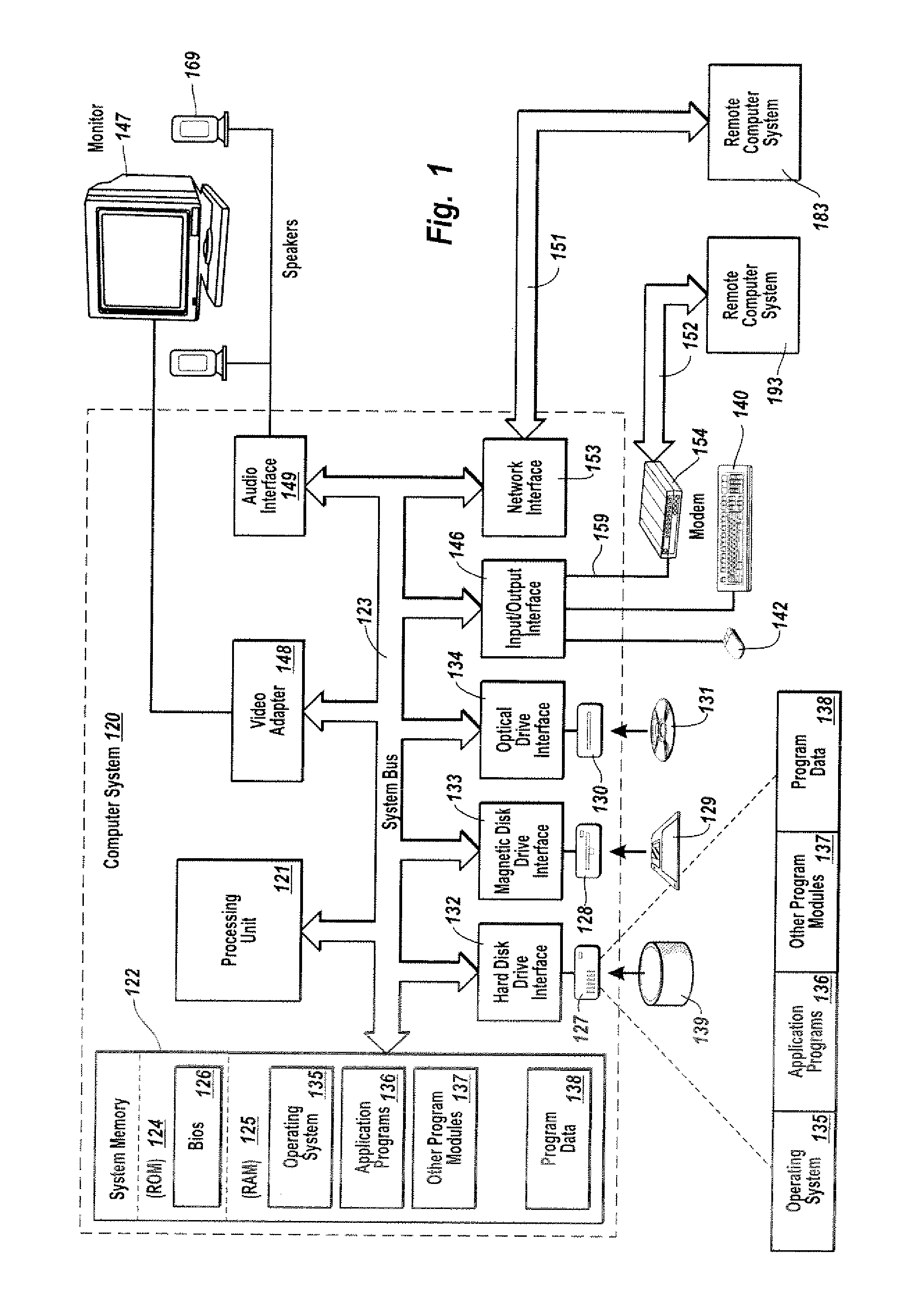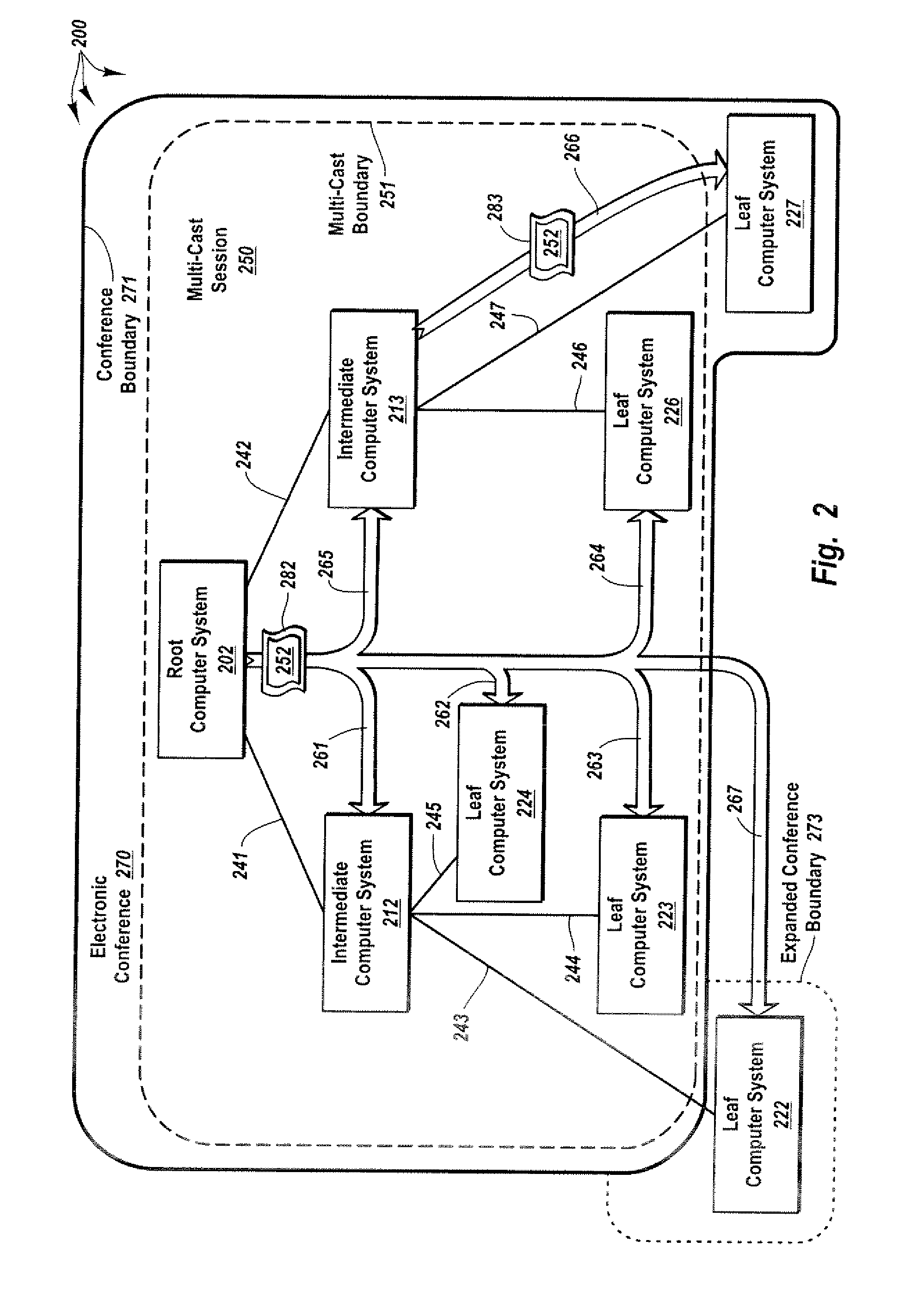Reliable Delivery of Multi-Cast Conferencing Data
a multi-cast conferencing and data technology, applied in the field of network communication technology, can solve the problems of increasing network latency, consuming network bandwidth, and relatively large bandwidth consumed by transferred state information, and achieves the effects of reducing latency associated, increasing current send rate, and saving network bandwidth
- Summary
- Abstract
- Description
- Claims
- Application Information
AI Technical Summary
Benefits of technology
Problems solved by technology
Method used
Image
Examples
Embodiment Construction
[0025] The principles of the present invention provide for reliably delivering multi-cast conferencing data to computer systems participating in a multi-cast conference session. When multi-cast conferencing data is lost or damaged during delivery, the lost or damaged conferencing data can be repaired via connection-oriented uni-cast delivery. Computer systems can join an existing multi-cast conference session without significantly impacting other computer systems already participating in the existing multi-cast conference session. A root computer system can adjust a multi-cast send rate to compensate for changed network conditions.
[0026] Embodiments within the scope of the present invention include computer-readable media for carrying or having computer-executable instructions or data structures stored thereon. Such computer-readable media may be any available media, which is accessible by a general-purpose or special-purpose computer system. By way of example, and not limitation, ...
PUM
 Login to View More
Login to View More Abstract
Description
Claims
Application Information
 Login to View More
Login to View More - Generate Ideas
- Intellectual Property
- Life Sciences
- Materials
- Tech Scout
- Unparalleled Data Quality
- Higher Quality Content
- 60% Fewer Hallucinations
Browse by: Latest US Patents, China's latest patents, Technical Efficacy Thesaurus, Application Domain, Technology Topic, Popular Technical Reports.
© 2025 PatSnap. All rights reserved.Legal|Privacy policy|Modern Slavery Act Transparency Statement|Sitemap|About US| Contact US: help@patsnap.com



